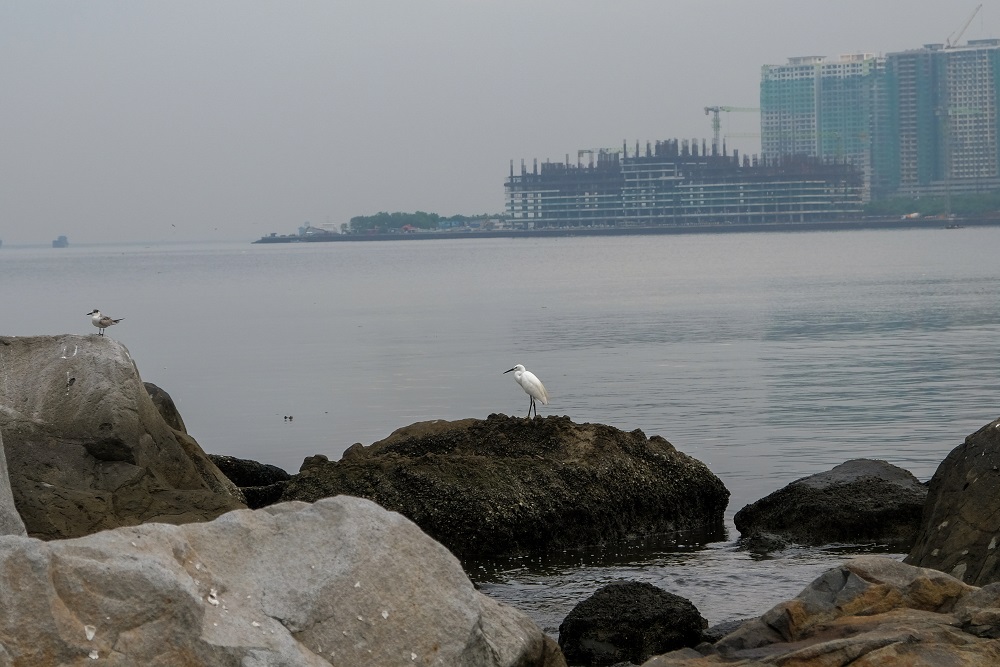
September 30, 2024 Monday

The Tanza Marine Tree Park in Navotas serves as a resting habitat for migratory birds such as the little egret. Photo by Albert Alcain/CCC
One of the most immediate impacts of climate change is the intensification of severe weather events that lead to habitat deterioration and ecosystem disruption.
According to the Philippines' National Adaptation Plan (NAP), extreme events including stronger tropical cyclones, droughts, and floods degrade various habitats, threatening the species that depend on them. Chronic changes, such as rising temperatures and sea levels, further jeopardize biodiversity and disturb the ecological balance.
In addition, decades of poor management, deforestation, urbanization, and pollution have accelerated the degradation of Philippine ecosystems. Vital areas such as mangroves, coral reefs and forests, which are essential for both biodiversity and local communities, are under severe threat. Climate change worsens these pressures, with stronger storms, rising seas, and changing rainfall patterns causing waterlogging, landslides, and habitat destruction.
Secretary Robert E.A. Borje, Vice Chairperson and Executive Director of the Climate Change Commission (CCC) underscored the urgent need for action.
"As our ecosystems face unprecedented threats, we must focus on restoring and preserving our natural habitats. Addressing the vulnerabilities of our ecosystems is crucial to ensure sustainable development and safeguard communities from the impacts of climate change," he stated.
Borje further emphasized, "We must prioritize our efforts to restore damaged ecosystems and protect critical habitats. Investing in biodiversity bolsters climate adaptation and fosters economic resilience for communities reliant on these natural resources."
He stressed that collaboration among government agencies, local communities, and stakeholders is vital to implement effective science-based strategies that will safeguard our ecosystems for future generations.
Grounded in national policies, the theme of the Philippines’ National Adaptation Plan (NAP) for Ecosystems and Biodiversity, "Safeguard and Nurture Biodiversity: Restore and Sustain Natural Assets," emphasizes the protection and rehabilitation of ecosystems. A key outcome of the NAP is to ensure the protection and restoration of biodiversity within these habitats.
The NAP highlights the need to rehabilitate and restore critical ecosystems, such as mangroves, coral reefs and coastal areas, which act as natural buffers against climate impacts. Through the managed realignment of coastlines and ecosystem restoration, the Philippines can protect these areas while enhancing biodiversity.
The NAP also outlines strategies such as the Ridge-to-Reef Approach and Ecosystem-based Adaptation (EbA) to protect biodiversity and sustain ecosystem services. In addition, eco-certification programs encourage businesses to adopt sustainable practices that promote habitat protection and pollution reduction, which help build ecosystem resilience.
“As we strive for sustainable development, the growing threat of climate change to habitats demands urgent attention. We must maintain biodiversity and its habitats while safeguarding ecosystem services by identifying priority areas, assessing vulnerabilities, and implementing timely interventions. This will ensure that natural systems continue to provide clean air, water, and food, while also enhancing community resilience,” Borje remarked.
Protected habitats, thriving ecosystems, and climate resilience are interconnected. Through nature-based solutions, ecosystem restoration, and strengthened climate policies, the country can preserve its rich biodiversity and safeguard habitats against the growing threats posed by climate change.
The United Nations designated the first Monday of October as World Habitat Day to reflect on the state of our habitats and the basic right of all to adequate shelter.